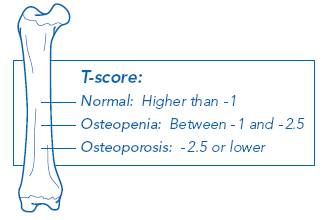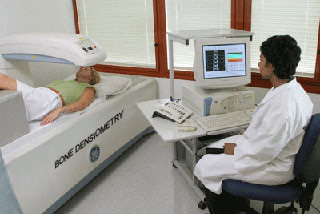How is osteoporosis diagnosed?
Osteoporosis is diagnosed by a bone density test (medical name - Dual-energy X-ray Absorptiometry; DXA). It is a short, painless scan that measures the density (strength) of your bones, usually at the hip and spine. The result from this test is called a T-score.
Doctors will first assess your risk factors for osteoporosis, which include your age, medical history and lifestyle factors, before referring you for a test.
Bone Density Test
A bone density test will give you a T-score. The result will be in the range of:
- Normal
- Osteopenia (low bone density)
- Osteoporosis
If the test shows osteopenia (low bone density), doctors may recommend lifestyle changes to reducerisk factors that can affect bone health. The medical profession will also recommend a follow-up test in 1-2 years to monitor your bone density.
If the test shows osteoporosis, this means your bone density is low and at risk of fracture. The medical proffesion will probably recommend you start treatment to stop further bone loss and prevent fractures. Lifestyle changes will also be recommended. A follow-up test is commonly conducted in a year to monitor your bone density and the effectiveness of the treatment.

